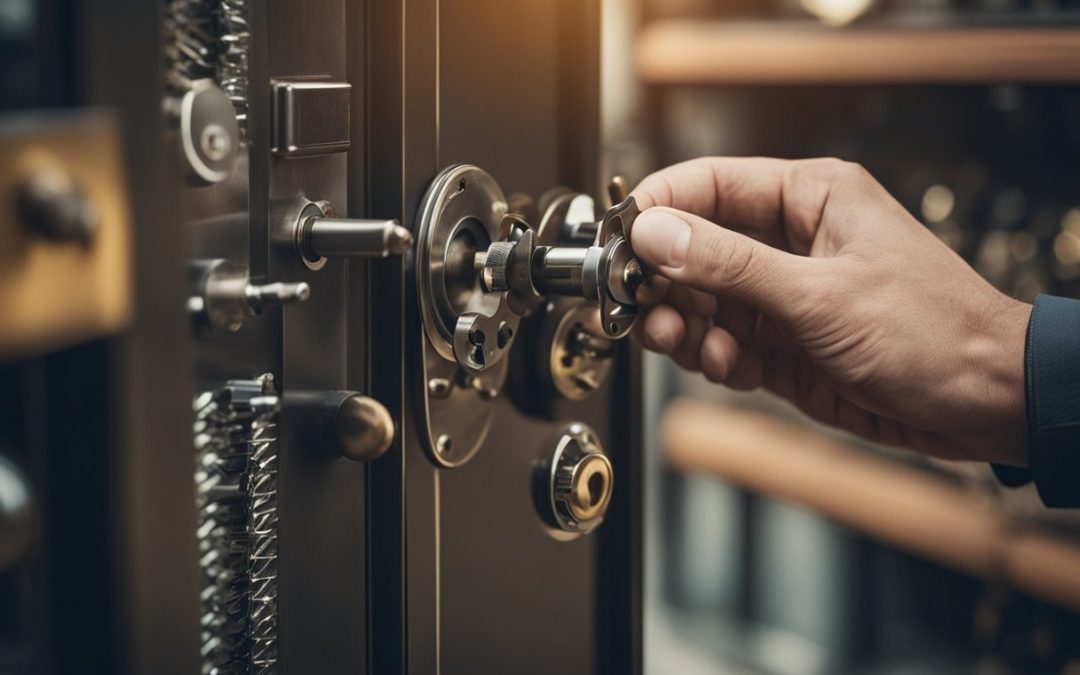Opening a safe can be a tricky and high-stakes task. When the contents are valuable or the lock is particularly complex, calling a professional locksmith is often the best approach. Professional locksmiths come equipped with the necessary tools and expertise to handle various types of safes, minimizing damage and ensuring successful access.
Attempting a DIY method might seem appealing due to its potential cost savings. While basic safes with simple locks can sometimes be opened with tutorials found online, there’s a significant risk of causing irreparable damage. In cases of valuable or irreplaceable items, the cost of professional assistance is a worthwhile investment.
Safety concerns also play a critical role. Manipulating the locking mechanism improperly can lead to accidents or further complications. Professionals have safeguards and techniques to address these issues efficiently, ensuring a safer and quicker resolution.
Understanding Safes and Lock Mechanisms
Safes are essential for securing valuable items, but they come in various types with different lock mechanisms. Knowing the kinds of locks and how to deal with common issues can help determine when it’s best to call a locksmith.
Types of Safe Locks
Safes utilize several types of lock mechanisms, each offering unique security features. Mechanical combination locks require the user to enter a sequence of numbers by turning a dial. These are reliable but can be time-consuming to open.
Electronic keypads are popular for their ease of use and quick access. Users input a PIN code to unlock the safe. These locks often include features like timed delays and multiple user codes.
Biometric locks use fingerprint recognition for access. They offer high security and are convenient, as they eliminate the need for keys or codes. However, they can be more expensive and may require regular maintenance.
Common Safe Issues and Troubleshooting
Several common issues can arise with safes, regardless of the lock type. Dead batteries in electronic keypads can prevent access. Replacing the batteries and using an external power source, if available, can solve this.
For mechanical combination locks, the most frequent problem is user error in dialing the correct sequence. Verifying the combination and carefully re-entering it can help.
Biometric locks might not recognize fingerprints if the sensor is dirty or the user’s finger is smudged. Cleaning the sensor and ensuring the finger is clean and dry can resolve this.
For more complex problems like jammed lock mechanisms or broken parts, contacting a professional locksmith is advisable. These experts can use specialized tools and techniques to safely open the safe without causing damage.
Deciding Between Professional and DIY
Choosing between hiring a professional locksmith and attempting to open a safe yourself hinges on the type of safe, the complexity of the lock, and your technical skills.
When to Call a Professional Locksmith
For complex or high-security safes, it’s best to seek professional help. Professional locksmiths have specialized tools and expertise to deal with intricate locking mechanisms. They can identify the lock type and method quickly, minimizing damage to the safe.
In cases involving lost combinations or electronic safe malfunctions, professionals can use decoding devices or software. Additionally, valuable contents or heirlooms warrant expert handling and for best of them you can find by visiting https://brevardlock.com/how-to-open-a-safe-if-you-forgot-the-combination/ . Locksmiths ensure the safe’s integrity and security are maintained, safeguarding your valuables.
DIY Safe Opening Techniques
DIY safe opening is suitable for simpler locks, such as key-operated or basic combination locks. Basic methods include trying to override the lock using the reset button (if the safe has one). Safe manuals or manufacturer’s guidance can provide specific instructions.
Using tools like a stethoscope to listen for clicks while turning the dial or attempting a trial-and-error method with known codes are common techniques. Be cautious not to exert excessive force, as this can lead to irreversible damage.
Safety and Legal Considerations
Opening a safe, even if you own it, can involve legal implications, especially if it’s rented or leased. Confirm your legal rights before attempting any DIY techniques. Unauthorized access, regardless of ownership, may result in legal consequences.
Moreover, safety is paramount. Incorrect handling of tools or misunderstandings about the lock’s mechanism can cause personal injury. Ensure you’re comfortable and knowledgeable about the methods you intend to use.

Recent Comments